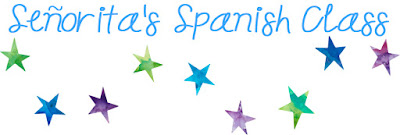may feel a little nervous.
I've been observed a few times in the past couple of years and my observations have consistently gone well. While I won't totally discredit myself as an effective and engaging teacher, I will say that a lot of my success is dependent on the types of activities I have my students complete while being observed. The following activities have been very successful and well-liked during my observations. I do want to make one thing clear though - I never put on a dog and pony show. I plan my formal observations around when I complete the following assignments with my students. However, I do have a few tips to make things run a little bit more smoothly in your classroom.
Students activities that tend to go well during a formal observation:
1) Peer editing - In my classroom we do lots of peer-editing. This peer-editing may be on a larger, long-term project or a smaller in-class task. Either way, peer-editing is a sure-fire way to show that students are providing feedback for each other, exhibiting respectful behavior by making appropriate comments about classmate work, possibly working with technology and more.
2) Self-reflection or self-editing - Self-editing shows that students are setting personal goals and are responsible for their learning and progression through a project. Self-editing allows students to self-monitor and see what still has to be improved in an assignment or what he or she is already doing well.
3) Technology-based "response systems" - In my last post, I talked about Plickers. Plickers is a great tool because students love it, it produces nice data to look at afterwards, and it ensures each student is participating. In my district, data are well-liked, so websites/apps like Plickers, Socrative, and more, are helpful because it illustrates just how well the students are doing, and more importantly, how they are improving over time. This data can be used to inform teach instruction and identify students who need additional support.
4) Group work - Group work is also great because, like peer-editing, it shows that students are working together to complete a task or further their learning. Any sort of mini projects or tasks where students work together to teach classmates something is especially exciting to observe.
5) Clear expectations - Posting classroom behavior expectations, deadlines, daily objectives, homework, and other important things is essential to running a smooth classroom. Students should always know where to look to see the posted homework (within the classroom and digitally if you have a site). In addition, when I have a long term project, I create a detailed calendar of due dates. While this may seem intimidating at first, after revising the calendar the first year you do the project, the due dates pretty much remain constant the subsequent years - you just need to change the actual dates. I always reference the calendar throughout the project so students know of the exact due dates coming up. It also serves as a great visual reminder for students to see the approaching deadlines.
6) Speaking the majority (or entire) class in the target language - Depending on the level of your students, teaching a foreign language in the target language is important. I usually switch to English while teaching my Spanish 3 students when I want to clarify something important or to emphasize a due date. Other than that, most of the class is delivered in Spanish.
Anyways, there are lots of interactive activities to have someone observe during a formal observation. One tip that I always have my students do is greet the observer at the start of class. I usually introduce the observer ("Clase, les presento a ____________") and then ask them to say, "Hola, senor/a ______________." That usually gets a chuckle out of the observer and takes the pressure off of the students if they feel nervous for being watched.
If you have other successful tips for an observation lesson, please leave them in the comments section below! There are countless ways to prove we are great at what we do :)
By the way, there's a CYBER MONDAY sale on TPT this Monday and Tuesday! My entire store will be 20% off (including bundles!), and with the coupon code, you can receive a total or 28% off of each product in my store. Time to stock up on those holiday products, eh?
Happy teaching!





























